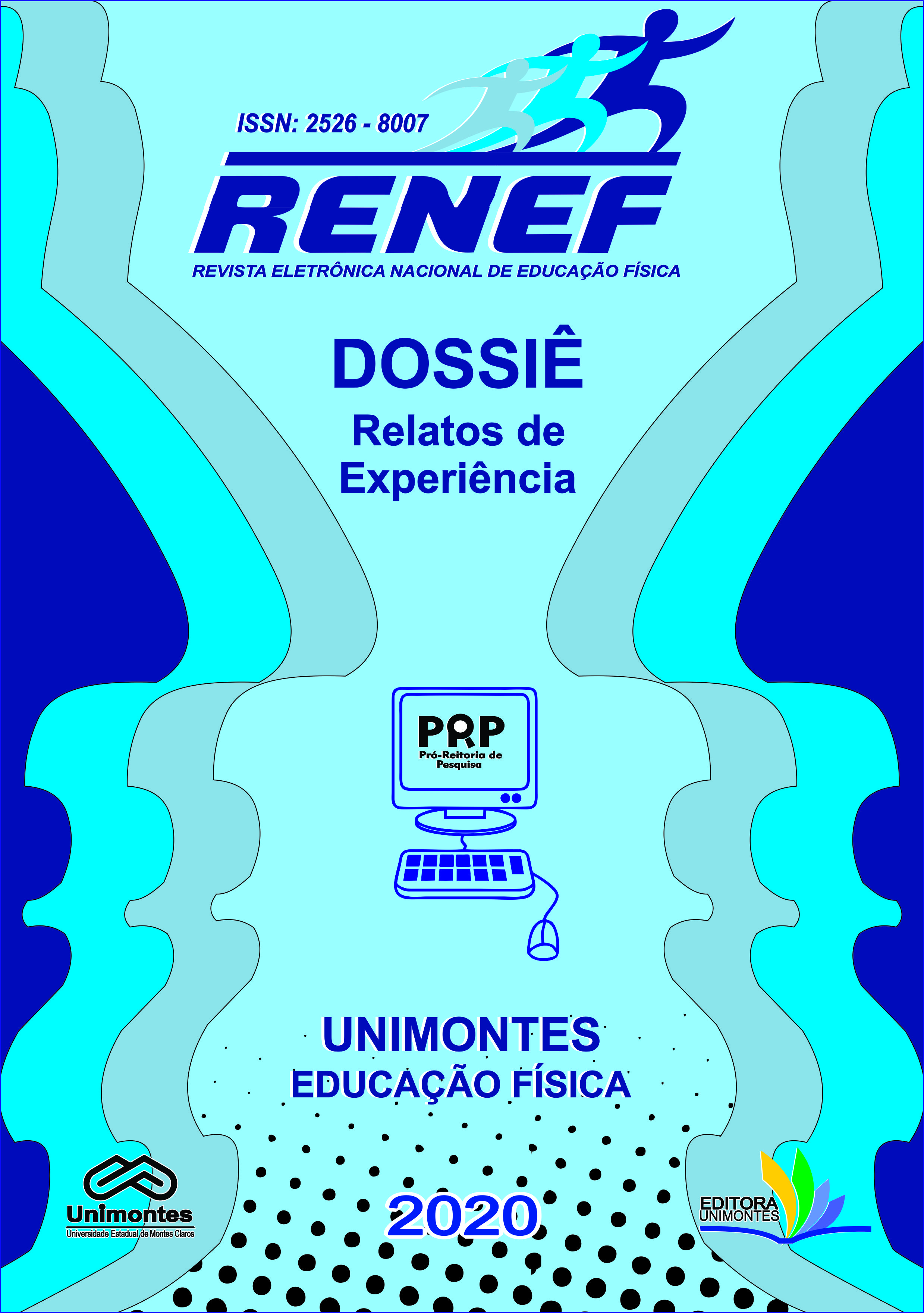A dança nos currículos dos cursos de Educação Física: por que e para quê?
Keywords:
relato, dança, educação físicaAbstract
With remote teaching already established at the State University of Montes Claros - Unimontes, between the months of June and July, the Didactic Collegiate of the Physical Education course at this institution, proposed the use of “Online didactic activities” on different platforms such as : Google Meet, Instagram and Youtube. The proposed activities could be lives, seminars, round tables or mini courses, organized by the teachers of the referred course from nine (9) axes. In this way, the objective of this report is to describe the experience of a round table entitled "Dance in the curricula of Physical Education courses: why and for what?", Proposed by the axis "Body, expression in Physical Education and gymnastics". Based on the new context faced, the organized groups chose different themes, which would interest and cross the different knowledge dealt with in the different curricular components of the EF baccalaureate course, in order to stimulate and “(re) get closer” to their student body. The theme defined for the table aimed to clarify some issues that permeate dance and the presence of this bodily manifestation in the curricula of PE courses, especially in the baccalaureate course. The teacher was responsible for the exhibition. Elisângela Chaves and professor José Roberto Lopes, with the mediation of professor Fernanda de Souza, all authors of this report; having finally reached its goal since there was a significant participation of teachers, students and people interested in the various themes that were part of the “Online didactic activities”.
Downloads
References
ANTUNES-NETO, J. M. F.Sobre ensino, aprendizagem e a sociedade da tecnologia: por que se refletir em tempo de pandemia? Revista Prospectus, v. 2, n. 1, p. 28-38, ago./fev. 2020. Disponível em: https://prospectus.fatecitapira.edu.br/index.php/pgt/article/view/32/21. Acesso em: 25 jul. 2020.
BARBOSA, A. M.; VIEGAS, M. A. S.; BATISTA, R. N. F. F. Aulas presenciais em tempos de pandemia: relatos de experiências de professores do nível superior sobre as aulas remotas. Rev. Augustus. Rio de Janeiro, v.25, n. 51, p. 255-280, jul./out. 2020. Disponível em: https://revistas.unisuam.edu.br/index.php/revistaaugustus/article/view/565. Acesso em: 31 jul. 2020.
CHAVES, E.A dança na Educação Física: encontros e desencontros. In: CHAVES, E., CORTES, G., COIMBRA, I.(Org.) Coletânea do II Fórum EduDança: Educação física e dança: diálogos possíveis e intervenções. Belo Horizonte: UFMG, 2016.
FIAMONCINI, L. Dança na educação: a busca de elementos na arte e na estética. Revista Pensar aPrática, Goiânia, v. 6, p. 59-72, jul./jun. 2002-2003. Disponível em: https://www.revistas.ufg.br/fef/article/view/16055/9839. Acesso em: 10 ago. 2020.
MACEDO, Y. M.; ORNELLAS, J.L.; BOMFIM, H. F. COVID – 19 no Brasil: o que se espera para população subalternizada? Revista Encantar - Educação, Cultura e Sociedade, v. 2, p. 01-10, jan./dez. 2020. Disponível em: http://www.revistas.uneb.br/index.php/encantar/article/view/8189/pdf_1. Acesso em: 31 jul. 2020.
MERLEAU-PONTY, M. Signos. São Paulo: Martins Fontes, 1991.
MONTEIRO, S.S. (Re)inventar educação escolar no Brasil em tempos da COVID-19.Rev. Augustus, Rio de Janeiro, v.25, n. 51, p. 237- 254, jul./out. 2020. Disponível em: https://revistas.unisuam.edu.br/index.php/revistaaugustus/article/view/552/301. Acesso em: 20 ago. 2020.
NASSIF, V. M.J.; CORRÊA, V.S.; ROSSETTO, D. E. Estão os empreendedores e as pequenas empresas preparadas para as adversidades contextuais? Uma reflexão à luz da pandemia do covid-19. Revista de Empreendedorismo e Gestão de Pequenas Empresas, v. 9, n. 2, p. i-xii, 2020. Disponível em: https://www.regepe.org.br/regepe/article/view/1880/pdf. Acesso em: 20 ago. 2020.
PASINI, C.G. D.; CARVALHO, É.; ALMEIDA, L. H. C. A educação híbrida em tempos de pandemia: algumas considerações. Observatório Socioeconômico da COVID-19. Disponível em:https://www.ufsm.br/app/uploads/sites/820/2020/06/Textos-para-Discussao-09-Educacao-Hibrida-em-Tempos-de-Pandemia.pdf. Acesso em: 25 jul. 2020.
SILVA, E. R. S. Graduação em Dança no Brasil: professor como orientador e aluno como protagonista. In: Graduações em Dança no Brasil: o que será que será? Organização: Instituto Festival de Dança de Joinville e Thereza Rocha. Joinville: Nova Letra, 2016.
SOARES, C. L.; MADUREIRA, J. R. Educação Física, linguagem e arte: possibilidades de um diálogo poético do corpo. Movimento, Porto Alegre, v. 11, n. 2, p.75-88, maio/agosto de 2005. Disponível em: https://seer.ufrgs.br/Movimento/article/view/2869/1483. Acesso em: 11 ago. 2020.
SUQUET, A. O corpo dançante: um laboratório de percepção. In: COURTINE, Jean-Jacques; CORBIN, Alain; VIGARELLO, Georges. História do corpo: as mutações do olhar. o século XX. Petrópolis: Vozes, 2008.
TOKOE, P.; HARF, R.Expressão corporal na pré-escola. São Paulo: Summus Editorial, 1987.
VELARDI, M. P. Prefácio. In: CHAVES, E.; CÔRTES, G. P.(orgs.). Dança: educação, lazer e arte nos percursos de pesquisa do Grupo EduDança. Editora Utopika: Belo Horizonte, 2019.


















